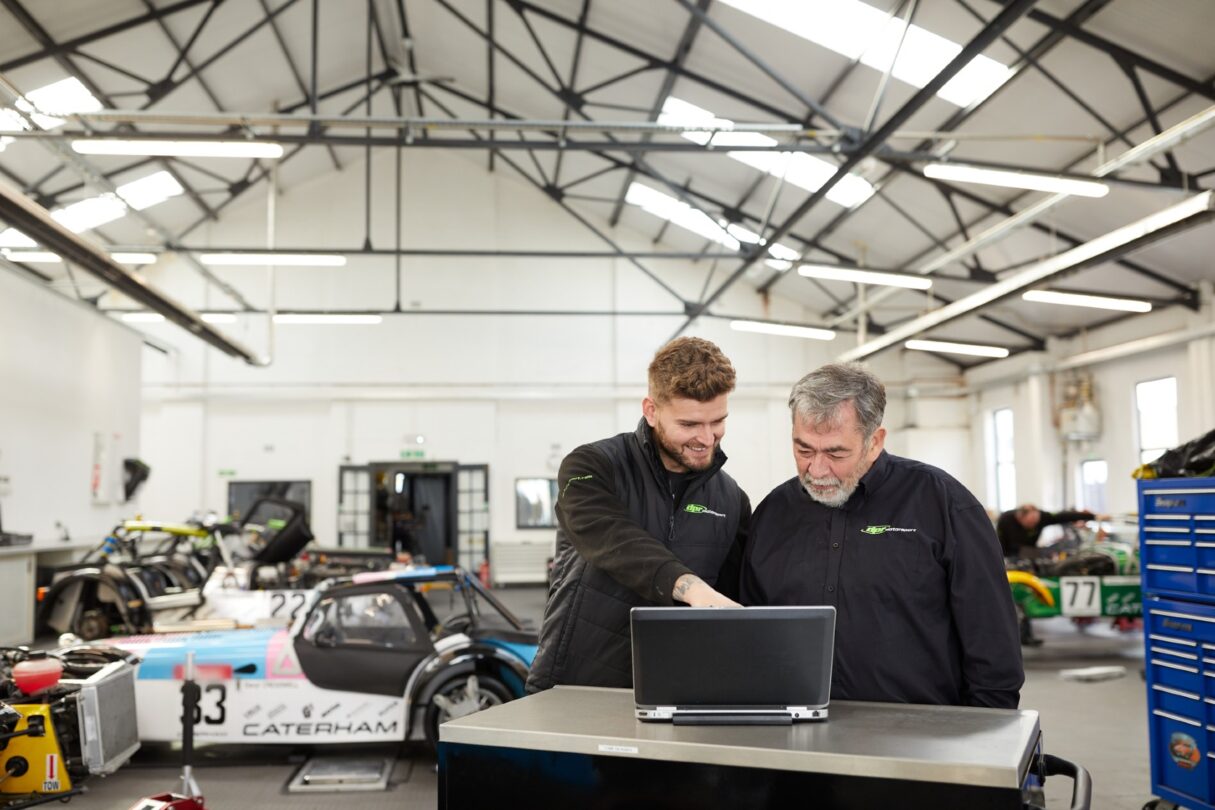People & Leadership
How to create a great employee experience and empower your people
Want to keep hold of your top talent at your business? You need to offer the best possible employee experience. Discover how you can do that.

The coronavirus pandemic and technology have handed more power to the employee.
From the first lockdown in March 2020, there was a sudden shift to remote working. As things opened up again, businesses and employees either stayed with remote working, moved to hybrid working or returned to the workplace.
However, as things are ever-changing, businesses are finding they need to stay fluid with their work location requirements.
But the pandemic has resulted in another outcome.
A quarter of workers are actively planning to change employers, as part of ‘the great resignation’, according to an article in the Guardian.
Regularly losing good employees isn’t great for business.
So how can you keep hold of your top talent? You need to offer the best possible employee experience.
In this article, we show you how to do that.
Here’s what we cover:
Why are so many people quitting for pastures new?
How payroll fits into the employee experience
Good HR processes secure and support employees
How to create a great employee experience
Use cloud HR and payroll software
Why are so many people quitting for pastures new?
At the core of the problem are a few issues: the poor way some businesses interact with their employees, old-fashioned ideas around management, a lack of flexibility and frustrations with technology.
That’s why it’s more important than ever to create a great employee experience that can meet the demands of today’s employees, who thrive best when you build a culture of trust and flexibility.
Benefits of a great employee experience include:
- Increased productivity and a higher quality of work: If employees are disengaged and unhappy, it’s natural that their productivity levels fall and work suffers, costing the business money in lost output and creativity.
- Better customer relations: Many experts believe there’s a direct correlation between employee and customer experience. Imagine having a happy employee interacting with customers. They’ll convey a positive mood and emotions, which filters down into exhibiting more dedication and understanding of the products and services your business offers, with your people working hard to add value for your customers.
- Improved retention and lower absenteeism rates: Unhappy employees are more likely to be absent from work, affecting morale, productivity and business finances. If they leave, this hits harder— the cost quoted for losing one employee is as much as £25,000.
- Choice of better talent: Word of mouth can be a massive differentiator, with many businesses competing for talent. If you can provide a great employee experience, past and present employees will share how good their time has been with you on websites such as Glassdoor.
How payroll fits into the employee experience
If you’re looking at one thing to get right as far as the employee experience goes, it’s helping your people with their finances by getting payroll right.
You could offer all the bells and whistles you want in terms of benefits, but if you don’t pay your employees on time or you get their payments wrong, they’ll quickly lose trust in the business.
Payroll certainly isn’t a function you want to get wrong.
Imagine being in an employee’s shoes if the business they work for gets their salary, deductions or taxes wrong. They won’t be happy.
After all, everybody has bills to pay and expects the correct money to hit their account at a specific time.
Paying your people correctly and on time, with the help of good cloud payroll software, will boost their employee experience.
And giving them digital access to relevant financial information via the technology they use every day will make life easier, both for them and yourself.
Good HR processes secure and support employees
While improving payroll is a minimum requirement, it’ll undoubtedly help if you can make HR interactions a pleasure rather than a chore.
With flexible working high on the agenda for lots of employees (especially in light of the impact of the pandemic), you need to support them with HR touchpoints they can access when they’re not in the workplace.
Cloud HR software allows your employees to quickly serve themselves and access HR documents when they want, via an online portal.
So if they need to access health, dental and pensions documents, for example, they can do so easily, via a laptop, desktop or an HR mobile app.
After all, they can serve themselves in their day-to-day interactions with businesses in their personal lives (think online banking and shopping), so why not give your employees the opportunity to do the same with your business.
Bring home the benefits
People who feel valued by their employer and happy in their role will be more likely to stay. Employee benefits can play a big part in repaying your people for their hard work.
Focus energy on creating competitive benefit packages that will enhance the employee experience, keep your people happy and motivated, and dissuade them from leaving you.
Employee benefits can be a crucial component to attracting and retaining high-quality talent.
For instance, health insurance and On-Demand GPs can be invaluable. Meanwhile, commuting and wellness benefits such as the Cycle to Work scheme and discounted gym memberships are welcomed by employees (and prospective talent).
How to create a great employee experience
Want some help to ensure you can deliver a great employee experience to your people? Here are some things to consider and put into practice.
1. Make onboarding memorable and useful
Make a great first impression and you’ll provide a positive experience for anybody joining your business. And that could make a big difference as to whether they stay long term.
You hired people for their skills, but they might need some fine-tuning before they settle. Offering effective training is a critical factor in successful onboarding, so it’s worth putting the time in to deliver it.
You also want to make sure you integrate your new employees with the team. This is especially important if they’re working remotely.
Set up sessions (in person or online) so they can meet and get to know their new team mates, and get a better understanding of the dynamics of the business and its vision and goals.
2. Connect with tailored communications
Look closely at how you communicate with your employees and check whether the messages you’re sending are hitting home.
Experiment with personalisation and language for online portal and email communication, and you could try videos or interactive gamification to get more engagement.
3. Support employees out of the office
For any employees working remotely (either full time or in a hybrid working capacity), make sure they have the technology and collaboration tools required to successfully do their jobs.
4. Develop your people
You need more than annual appraisals to get the best out of your people. Continuous performance processes and conversations tailored for each of your employees will go a long way.
Create space and structure for regular and ad hoc reviews, match individual goals to broader company objectives, and track employee performance to link comprehensive succession and reward planning.
If you can, help your employees recognise their peers for good work, by using a portal or online recognition board (or by dedicating time to do so in team meetings).
5. Listen, understand and respond to your people
Rather than simply focusing on periodic engagement surveys, really listen to your people and look at where you can acquire more personal, emotional and real-time feedback.
And once you have this information, act on it and keep your employees updated on how you’ve resolved any highlighted problems.
6. Use employee data to drive decisions
You might know the business, but your gut and intuition aren’t always going to be right in understanding what makes employees tick.
Data is your friend here.
Dig down into the numbers, look at employee data and use that to make smart decisions for your business.
Use cloud HR and payroll software
There’s no ignoring that technology plays a big part in getting your employee experience strategy right.
Through cloud software, employees in and out of the workplace can interact with your HR department and carry out the HR-related tasks they need to do.
It’s also the primary tool HR leaders can use to analyse and manage how things are going.
Rather than losing time working with lots of different systems, spreadsheets and apps, it’s better to keep things simple and work smart.
Use cloud HR and payroll software to support the employee experience, which offers a complete digital workplace and a single source of truth when it comes to data.
Empower your employees
Providing a great employee experience and empowering your people will benefit the business through higher performance and productivity, satisfaction and commitment beyond the call of duty.
So build a culture where your people can show initiative and complete their tasks with little guidance (but can access help when they need it), and where they’re empowered to make decisions that will help the business achieve its goals.
And finally, offer your employees the support they need to succeed.
Whether it’s by offering the likes of flexible working or additional training (among many other options), the result will be an engaged workforce who get health, happiness and the fulfilment only a good job can bring.
Everybody wins.
How to boss managing your people and payroll
Discover how to help your people overcome some of the challenges they face so they can prosper and your business can thrive.








Ask the author a question or share your advice